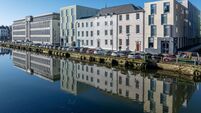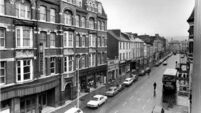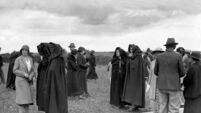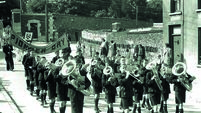Throwback Thursday: Straight Road racing and city horse troughs
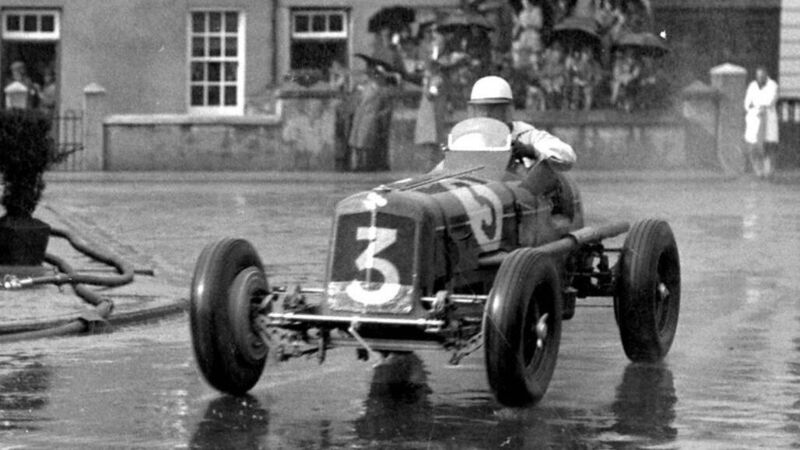
A car rounding Victoria Cross bend during the Cork International Motor Race at Carrigrohane Road in May, 1937.
TWO great exhibitions have opened here on Leeside, both absolutely redolent of the golden days of times past.
One is the big Motorsport exhibition at Cork City Library, and down in Passage West, there is one on the Cork, Blackrock and Passage Railway, no less!
You may not be old enough to remember either of those, but perhaps your parents or grandparents told you of them?
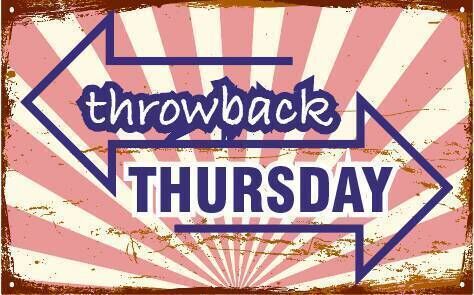
Anyway, get along to both, and let us know on Throwback Thursday, what you thought of each.
Cork Motorsport, which opened last week at the City Library, relives the splendid memories of those days when the Carrigrohane Straight and other Leeside locations were right up there with the famous racetracks of the rest of the world.
We have always had a rich tradition of motoring adventures here - you don’t have to look back further than July, 1981, when Mel Nolan set the land speed record on the Straight Road.
But our motoring heritage goes way further back, through the great days of motorcycling at Vernon Mount, road races, scrambles, and more (with some wonderful memories recorded on past pages of Throwback Thursday) right to the legendary Cork Grand Prix Series of 1936-38.
That famous event attracted some of Europe’s top racing teams, including Bugatti and Maserati, and was watched by an estimated 70,000 spectators.
Indeed, one of the cars raced there became known as the Cork Bugatti, and that model still retains that name to this day.

And many individual events and stories have a place in the exhibition too. If you can remember a grandparent telling you about his glory days of racing, or you are simply an avid fan of motorsport, then you must get down there and see what they have put together at the library - everything from model cars to actual rally vehicles and bikes. Great memories to share!
The exhibition runs to June 2, so you have got time, but don’t delay because you will probably want to go along more than once!
And our railways, our railways...
Don’t we all have happy dreams of a golden age when steam was king and a day out often meant a thrilling trip by train to the seaside or even to faraway Dublin?
One doughty little line that closed 90 years ago, but today is receiving a new lease of life as a popular city greenway, is the Cork, Blackrock and Passage one, and a wonderful new exhibition about it opened just yesterday at the Passage West Maritime Museum.
It’s an opportunity to see for the first time in glorious colour (thanks to colourisation by exhibition curator and museum committee member Joe Healy, long time stalwart staff member on this paper and the Examiner), more than 20 posters tracing the tracks, and many stories and places associated with a railway that eventually extended for just under 16 miles from Cork to Crosshaven.
It runs until the end of July, and you will want to bring anyone visiting you this summer to see it too. Do let us know what you think of it.
We have heard again from Tom Jones, who was delighted with Pat Fitzgerald’s memories last week of the Church Road football games of yesteryear.
“Many thanks and appreciation to Pat for his wonderful details on the old soccer pitches at Church Road,” said Tom.
“His recollections are in many ways akin to my own. Even today, I recall the metal fence around one pitch, plus a vague recall of a shop of sorts at that location.”
While Tom can’t recall admission charges of any form there, he vividly remembers in later years (circa 1960 to 1964) heading for Turners Cross or Flower Lodge to see Cork Celtic or Cork Hibs play.
“I would wait at the turnstiles, asking to get in with a man!”
Now was this a customary freebie for accompanied children, can someone tell us more about it? It would be nice to know.
As a matter of fact, reveals Tom, “the only reason I would have been at Church Road then, was by courtesy of a crosser (the crossbar) on a ‘high nelly bike’ from one of the older boys on St Michaels Road [aka De Terrace] on Spangle Hill.”
Ah, the great days of getting a crosser. I suppose it’s frowned upon these days...
Speaking of Church Road, Mr Jones shares a popular legend of his childhood, that during one intense game there, someone threw a motorcycle crash helmet across the penalty area, whereupon the centre forward headed it into the goal. One wonders if that was true? Can any other reader enlighten us?
Tom wonders if Pat recalls the schoolboy soccer played primarily at that time in Togher.
“Was the venue then called Hound Dog Road, or some such name? That seems to echo in my memory, although I don’t know why. This would be in the late 1950s or thereabouts.”
Again, we appeal to other readers who doubtless have that name at their fingertips and can let us all know.
Mr Jones particularly remembers the Dennehy family, who had a coal/turf store just off Shandon Street, his own childhood home. “All of whom became respected as great, or should I use the parlance, as handy soccer players - , as was Miah Dennehy of Cork soccer fame, who I think was a cousin of theirs.
“The Dennehys also sponsored a team called Northville or North View for many years.”
Tom was also personally acquainted with ‘Mr Football’, Tony Hennessey, mentioned by Pat Fitzgerald.
“He was an always entertaining and all-round nice guy. ‘I’m onside and open, cross the ball at 3ft high’ or other directives, you often heard him call out during a game. A legend of the Northside, and a class act.”
Ernie Nelson’s memories of Greenmount School and the adjoining Industrial School also sounded chords in Tom’s memories, “and who amongst us of a certain vintage does not recall The Kennedys Of Castlerosse at 1.30pm weekdays on the wireless?”
Ernie also reveals that the threat of Greenmount Industrial School or Upton was regularly suggested to him by the brothers at Blarney Street school, “probably because of my sometimes cheekiness or questioning about life as portrayed back then”.
What Tom enjoys most is sitting outside on his deck in Key West, Florida, and reading Throwback Thursday, with pictures of his childhood back in Cork rising in front of his eyes as he peruses the memories of other readers.

“One in particular by Patty O’Boyle, talking of Parnell Place, intrigued me. What caught my attention here was the mention of a horse trough.
“In the Cork city of the 1950s that I grew up in, there were quite a few of them around. I too recall there was one on Parnell Place, plus one on Lower Oliver Plunkett Street, one on the Watercourse Road, another on the end of Douglas Street, where double decker buses heading to Ballyphehane had to make incredibly tight turns to stay on route, and of course one where I was born near the North Gate Bridge on Pope’s Quay.”
Please do add to his list, he begs.
Well, this writer can certainly put in the venerable horse trough at St Luke’s Cross, at the top of Summerhill North, where the toll booth that exacted a fee from every cart trundling its way into the city is still in existence too, and both thankfully valued and cared for.
Looking at both of those, one can revisit an earlier, slower and more peaceful way of life, when the horses rested and thankfully soaked in a few gallons of water, while their driver argued over a rogue halfpenny with the toll collector.

By the way, did you know that the carts in Cork were fitted with a loose metal shoe on a chain, to be put on the rear wheel when descending one of the many steep hills with which we are blessed? It helped to slow the cart down and aid the horse, and made a particular scraping noise all its own.
Remember that, back then, before we all had the worldwide web at our fingertips on mobile phones, and when anyone who wanted to know something had to head for the encyclopaedia on the bookshelf, it was a matter of personal pride in Cork to have in memory thousands of such facts and trivialities. Yet, not quite trivia - to know that of yore a stream ran underneath that very street, or that there was a tiny lane leading down from that hill which would shorten your journey by ten minutes, or indeed that such and such a field on the outskirts was genuinely public land, whatever some official might have claimed as he put up a barbed wire fence...
These were part of the network of local knowledge, shared and passed on, that in a way we now seem largely to have lost.
Tom agrees.
“As many an ‘Old Codger’ can attest to, for they prided themselves on such trivialities or factoids. Hence that mention of Georgie Murphy of The Bowlers Pub in Blackpool a week or so back. And, having spent a smidgen of my early youth in the taverns of Shandon Street and Blackpool, when I returned from foreign shores in later years, apart from being teased about the change in my accent, believe it or not, I would be challenged on this important local knowledge to ensure I did not lose my identity and heritage as a Northsider and Cork child of merit.
“Suffice it to say, there were no cell phones or internet back then to fact check, so this knowledge had to come directly from memory. And that is the way I write them today, based on my own recall.”
Well said, Tom.
And those of you reading this page today, if you felt a memory popping up in your own mind, then let us know it!
You don’t have to find pen and paper, let alone an envelope and stamp these days - just email us your thoughts.
Send them to jokerrigan1@gmail.com (don’t omit the number ‘1’ after my name there, as otherwise the email goes to New Zealand), or leave a comment on our Facebook page: https://www.facebook.com/echolivecork.
